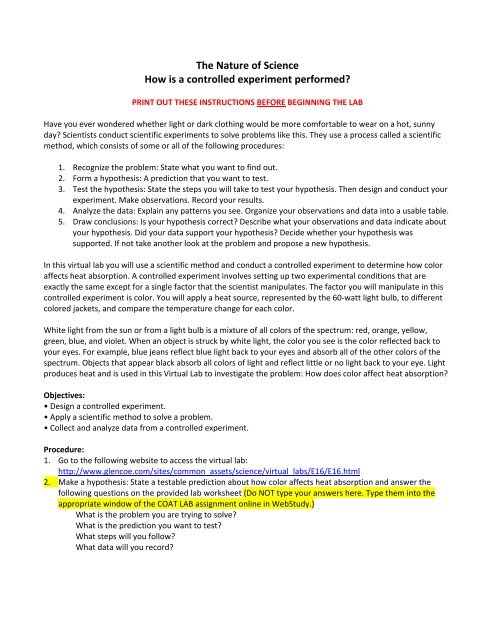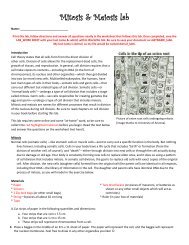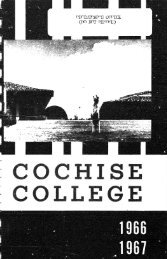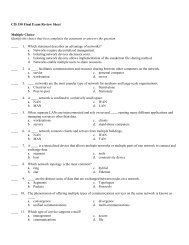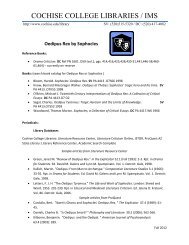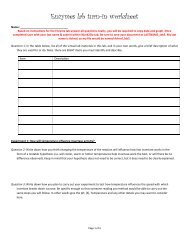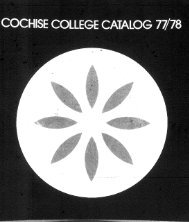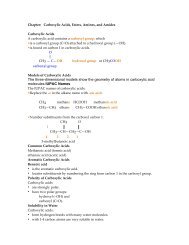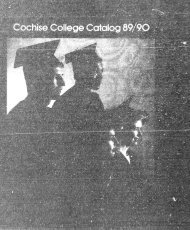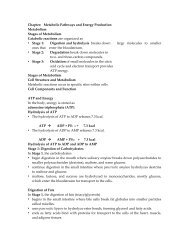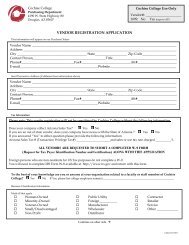The Nature of Science How is a controlled experiment performed?
The Nature of Science How is a controlled experiment performed?
The Nature of Science How is a controlled experiment performed?
- No tags were found...
You also want an ePaper? Increase the reach of your titles
YUMPU automatically turns print PDFs into web optimized ePapers that Google loves.
<strong>The</strong> <strong>Nature</strong> <strong>of</strong> <strong>Science</strong><strong>How</strong> <strong>is</strong> a <strong>controlled</strong> <strong>experiment</strong> <strong>performed</strong>?PRINT OUT THESE INSTRUCTIONS BEFORE BEGINNING THE LABHave you ever wondered whether light or dark clothing would be more comfortable to wear on a hot, sunnyday? Scient<strong>is</strong>ts conduct scientific <strong>experiment</strong>s to solve problems like th<strong>is</strong>. <strong>The</strong>y use a process called a scientificmethod, which cons<strong>is</strong>ts <strong>of</strong> some or all <strong>of</strong> the following procedures:1. Recognize the problem: State what you want to find out.2. Form a hypothes<strong>is</strong>: A prediction that you want to test.3. Test the hypothes<strong>is</strong>: State the steps you will take to test your hypothes<strong>is</strong>. <strong>The</strong>n design and conduct your<strong>experiment</strong>. Make observations. Record your results.4. Analyze the data: Explain any patterns you see. Organize your observations and data into a usable table.5. Draw conclusions: Is your hypothes<strong>is</strong> correct? Describe what your observations and data indicate aboutyour hypothes<strong>is</strong>. Did your data support your hypothes<strong>is</strong>? Decide whether your hypothes<strong>is</strong> wassupported. If not take another look at the problem and propose a new hypothes<strong>is</strong>.In th<strong>is</strong> virtual lab you will use a scientific method and conduct a <strong>controlled</strong> <strong>experiment</strong> to determine how coloraffects heat absorption. A <strong>controlled</strong> <strong>experiment</strong> involves setting up two <strong>experiment</strong>al conditions that areexactly the same except for a single factor that the scient<strong>is</strong>t manipulates. <strong>The</strong> factor you will manipulate in th<strong>is</strong><strong>controlled</strong> <strong>experiment</strong> <strong>is</strong> color. You will apply a heat source, represented by the 60‐watt light bulb, to differentcolored jackets, and compare the temperature change for each color.White light from the sun or from a light bulb <strong>is</strong> a mixture <strong>of</strong> all colors <strong>of</strong> the spectrum: red, orange, yellow,green, blue, and violet. When an object <strong>is</strong> struck by white light, the color you see <strong>is</strong> the color reflected back toyour eyes. For example, blue jeans reflect blue light back to your eyes and absorb all <strong>of</strong> the other colors <strong>of</strong> thespectrum. Objects that appear black absorb all colors <strong>of</strong> light and reflect little or no light back to your eye. Lightproduces heat and <strong>is</strong> used in th<strong>is</strong> Virtual Lab to investigate the problem: <strong>How</strong> does color affect heat absorption?Objectives:• Design a <strong>controlled</strong> <strong>experiment</strong>.• Apply a scientific method to solve a problem.• Collect and analyze data from a <strong>controlled</strong> <strong>experiment</strong>.Procedure:1. Go to the following website to access the virtual lab:http://www.glencoe.com/sites/common_assets/science/virtual_labs/E16/E16.html2. Make a hypothes<strong>is</strong>: State a testable prediction about how color affects heat absorption and answer thefollowing questions on the provided lab worksheet (Do NOT type your answers here. Type them into theappropriate window <strong>of</strong> the COAT LAB assignment online in WebStudy.)What <strong>is</strong> the problem you are trying to solve?What <strong>is</strong> the prediction you want to test?What steps will you follow?What data will you record?
3. Test your hypothes<strong>is</strong>: Select a jacket material by clicking the Wool, Nylon, or Denim button. <strong>The</strong>n drag adifferent colored jacket into each <strong>of</strong> the <strong>experiment</strong> boxes. A temperature probe will automatically beplaced in the pocket <strong>of</strong> each jacket. Click the Test button to start the <strong>experiment</strong>. When the timer stops,calculate the average temperature for each color <strong>of</strong> jacket (add the three temperature values together, thendivide the sum you get by 3), and record these averages in the Table area provided in the animation (lookat the bottom left‐hand side).4. Repeat the <strong>experiment</strong> and test a different jacket material or color.5. Analyze your data: Analyze the data in the Table. Click the Graph button to see your results graphed.6. Explain any patterns you observed. (Do NOT type your answers here. Type them into the appropriatewindow <strong>of</strong> the COAT LAB assignment online in WebStudy.)7. Draw a conclusion about how color affects heat absorption(Do NOT type your answers here. Type them intothe appropriate window <strong>of</strong> the COAT LAB assignment online in WebStudy.)Did your data support your hypothes<strong>is</strong>? Why or why not?<strong>How</strong> does the material <strong>of</strong> the jacket affect heat absorption?Describe the strengths and weaknesses <strong>of</strong> the computer model you used in the <strong>experiment</strong>.What other parameters could you use in such an <strong>experiment</strong> to determine the effect <strong>of</strong> color on heatabsorption?


